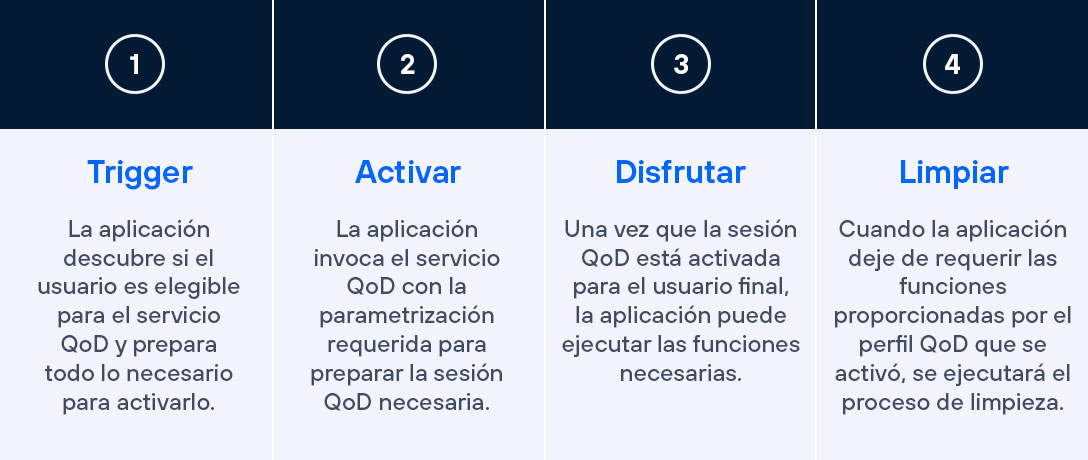QoD Mobile API: how to control your customers' mobile connectivity
Much of the digital content that people consume on a daily basis comes from mobile networks. In the course of the day, they do not always have the possibility to connect to a fixed network and therefore resort to using their data. Whether for watching videos on streaming platforms, shopping online or just sending text messages, users depend on good mobile connectivity.
Through the Telefónica Open Gateway initiative, we have turned our networks into platforms to facilitate the creation of optimised digital services. Thus, through standardised Telco APIs under the framework of CAMARA, we provide developers with advanced functionalities that can enhance the user experience in a number of ways. One of them is to ensure higher quality connectivity in the applications they are using.
A tour through the QoD Mobile API
The QoD service allows applications to modify the network configuration of end-users during certain periods of time to enable certain features of their product, regardless of the telecommunications operator to which they subscribe. When the network configuration is activated, for the time indicated by the application, the application can unlock advanced usage functions or reinforce those that already exist.
Thus, with the QoD Mobile API, application developers can configure the network more optimally to meet the needs of customers at specific times of use. In other words, in case the application requires a short burst with higher throughput or a temporary control over maximum latency, there is a QoD profile ready to be activated.

The possibility of using this API offers several advantages and benefits. Not only does it optimise the client's network, but it also leads to a smoother user experience. Users can enjoy enhanced services without even noticing that their mobile network has been modified, improving their satisfaction with the application. This opens up the possibility of offering new paid functionalities that the user would be willing to purchase.
As it is a standardised API, the developer can take advantage of this. You can integrate this service into applications just once, without the need for customised implementations for each telecom operator. It simplifies the development process and reduces time to market.
Find out how Zoom has integrated QoD Mobile
As mentioned above, this innovative solution offers a number of advantages and companies like Zoom see huge potential in using it. The virtual meeting room platform is looking to evolve its services with improved connectivity, especially for its paying users. Implementing new premium services, in order to increase the number of subscribers, requires specific network parameters. By integrating the QoD Mobile API, it is possible to enhance the webinar experience and other online formats, allowing room hosts to activate, for example, HD mode, to automatically raise the quality of presentations and stabilise connectivity.
This is just one example of an application, but the API extends its solutions to many other sectors, such as industry and manufacturing, ICT services and media, entertainment and XR. This is due to its versatility of integration and the possibility to improve connectivity in different aspects of applications. For example, in mobile games, the API can enable connectivity boosting to achieve lower latency and improve the end-player experience.
If you want to learn more about the API and its benefits, sign up for the Partner Program or join the Developer Hub to access the full Whitepaper. There you can read about its nature, architecture, implementation, transparency issues and other technical aspects.



